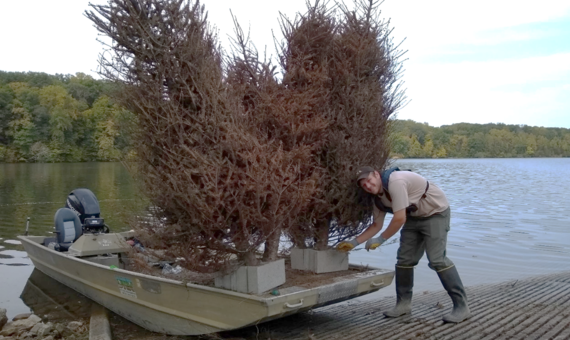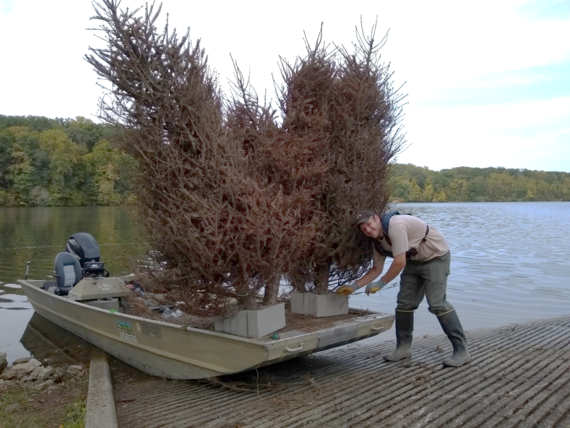
(UNDATED) – Habitat structures are valuable not only for anglers but also for fish. Besides being advantageous to anglers by congregating fish, the structure provides food and shelter for fish.
Many impoundments in Indiana have limited habitat structures due to the decomposition of woody material over time and a lack of natural inputs.
While Indiana is addressing these issues in larger impoundments through the reservoir habitat improvement program, projects are also being undertaken at smaller public waters.

For the past two years, the central Indiana district fisheries office has improved structure in several smaller public impoundments through the placement of donated materials. To date, local home improvement stores have donated more than 300 unsold Christmas trees for use as fish structure. In 2020, these donations were used to create 72 fish habitat structures that were placed in Plover/Sandpiper pits, Stone Arch Lake, Beaver Bottom Lake, and Whitewater Lake. These repurposed Christmas trees would have gone to a landfill if they hadn’t been donated, making this a win-win for business and the environment. The structures were placed near high-use bank-fishing areas, around fishing piers, and in other shallow-water areas where they can be accessed by both shore and boat anglers. Most structures are placed in 4 to 8 feet of water to provide shallow-water habitat for fish and to make the fish easy for anglers to locate.
Please note that adding fish habitat structures to public waters requires a permit in accordance with the Lake Preservation Act (Indiana Code 14-26-2) and Indiana Administrative Code (312 IAC 11-4-7). Individuals cannot place Christmas trees into public waters without a permit.
To locate a fishing area near you, visit DNR’s recently updated Where to Fish Map. Find information about fish habitat structures you can install at your private pond or lake by clicking here. Have questions about fishing or fisheries management near you contact your district fisheries biologist.



